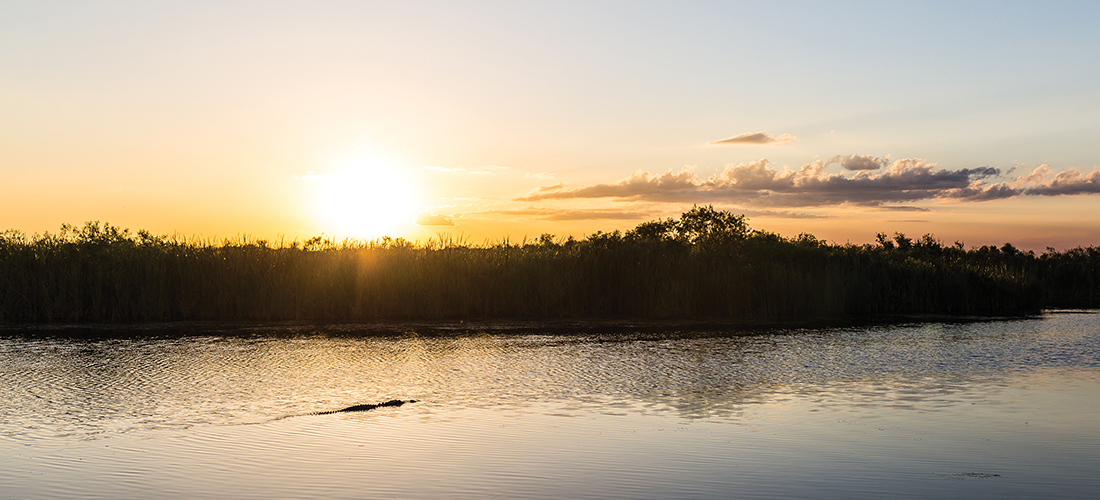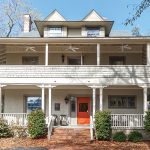
Chasing fish — and a bit of warmth
By Tom Bryant
Snowbird (person) — Wikipedia
A snowbird is a person who moves from the higher latitudes and colder climates of the northern United States and Canada and migrates southward to warmer locales such as Florida, California, Arizona, Texas, or elsewhere along the Sun Belt of the southern United States.
I guess you could say my grandfather fit the Wikipedia definition long before Wikipedia existed or the term “snowbird” was coined anywhere in the vernacular. He really didn’t qualify for the definition in its truest sense though, in as much as he already lived in the Sun Belt, in sunny South Carolina.
But Granddad was always cold-natured. When I was just a youngster, I can remember deer hunting with him and listening as he complained about the frosty weather. Many times he said, “Son, just as soon as the Christmas holidays are over, your grandma and I are heading south, down to Florida, where I plan to bask in the sun and catch as many fish as your grandma and I can eat, and you know she loves fresh fish.”
Granddad wasn’t a true snowbird because he bought a place, 100 acres exactly, right on the St. Johns River at a little crossroads of a town by the name of Astor Park. After that he was no longer a transient. Later when I visited them at their Florida property, I asked him why he needed so much land. His answer was simple: “Son, I might need to expand.”
He started with a little Airstream trailer, which he would tow from the homestead in South Carolina to the river property in Florida. Every winter when the wind would begin whistling out of the north and a heavy coat of frost would whiten the fields, my granddad would hitch up the little Airstream and head to the St. Johns.
Now both Granddad and Gangama, as we grandchildren called her, were pretty big people, and it didn’t take them long to decide that the trailer was OK but they needed more room. So they built a place with all the conveniences of home and parked the little trailer behind the new storage building. It didn’t stay there for long, though.
In the early ’50s, winters seemed to be colder and summers hotter. This was way before the catchphrases “global warming” and “climate change” rolled around. Granddad always said that weather was cyclical; we could have several years of colder winters than usual, and then several years of warmer than usual weather. Everything seemed to even out in the course of things.
But, when the cold migrated farther south and my granddad couldn’t fish in his shirtsleeves, he hooked up the little Airstream and headed to the warmer climes at Everglades City and Chokoloskee Bay. He bought a little place on Half-Way Creek just big enough for his boats and the trailer. Here he would retreat when old man winter got nasty up around Astor.
It turns out that the acorn really doesn’t fall far from the tree. My dad built a river house on the St. Johns; and after he passed away, my mom started wintering in Florida. So what do I do in retirement? I buy a little Airstream trailer and my bride, Linda, and I make our own winter sojourn south.
This will be the fifth year we’ve hooked up and hit the southern roads, and what an experience it has been. I was fortunate as a youngster to spend a lot of time with my granddad fishing in Florida, and I’ve lived long enough to see the major changes that have taken place in that state. It has been nothing short of amazing. The 100 acres that my granddad bought in the ’50s was nothing but scrub palmetto bushes, pine trees and sand. Today, his land is home to upscale restaurants, horse farms, and parts of cattle ranches.
The little piece of property in Everglades City on Half-Way Creek is now part of a huge marina where fishermen from all over the country come to try their luck in the 10,000 Islands that border Chokoloskee Bay and the Gulf of Mexico.
Our winter spot down there is what Linda calls the fish camp. It’s located on Chokoloskee Island and is usually inhabited this time of year by true snowbirds. These folks come from frosty hinterlands such as Canada, New York, Connecticut, Minnesota and other frigid locales, many arriving in southern Florida around November. They will soak up the sun until the weather up north becomes more habitable, usually in April. Then they will line Interstate 95 almost bumper to bumper as they head home to do it all over again the following winter. It’s something to see, and we have become part of this exodus.
When you read this, we’ll be on the way home after another month or so enjoying the warmth and some good fishing. Southwest Florida is beautiful in late winter. The sky is bluer and the air is moist and easy to breathe. Cumulous clouds hang low like puffs of cotton and look as if they can almost touch the coconut palms.
Our little Airstream has opened the door to an entirely different lifestyle that grows every year, that of traveling Americans. Not the ones who hop on a plane in New York and scurry off to sunny California, but the folks who drive across the country, seeing it from the ground level. These are the ones closer to our forefathers who backed their horses into the traces, hooked up the Conestoga wagons and headed to parts unknown. I know that sounds a little dramatic. Where they had four horses, our FJ Cruiser has almost 300; and whereas their maps were hand-drawn and sometimes not accurate, our GPS keeps us on the right path wherever we go. But like those folks from long ago, we’re looking at the same country, however changed it might be.
In the 10 years we’ve had the Airstream, we’ve traveled through almost every state, and I’ve confirmed an observation made many years ago by my granddad. Early one morning as we were fishing for sheepshead near Fiddler Key in the 10,000 Islands, I said, “There are a lot more folks down here this winter, Granddad. Seems as if most of them are Yankees who talk funny.”
He laughed, “There is a bunch more this year.” He paused and added, “I bet we sound funny to them, too. But you know, son, one thing I’ve discovered in my many years and travels, people are mostly the same wherever you go. I bet you’ll find that to be true when you get a little older and see more of the country.”
He was right. Just about everybody we’ve met from Alaska to Florida might speak with a different accent, but their hearts seem to be in the right place. PS
Tom Bryant, a Southern Pines resident, is a lifelong outdoorsman and PineStraw’s Sporting Life columnist.





